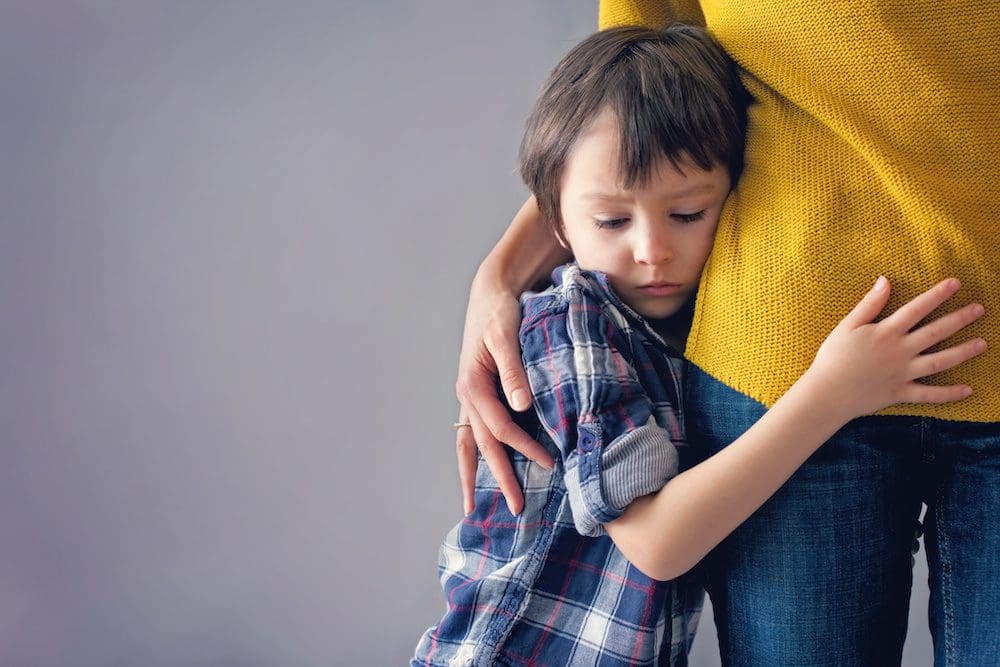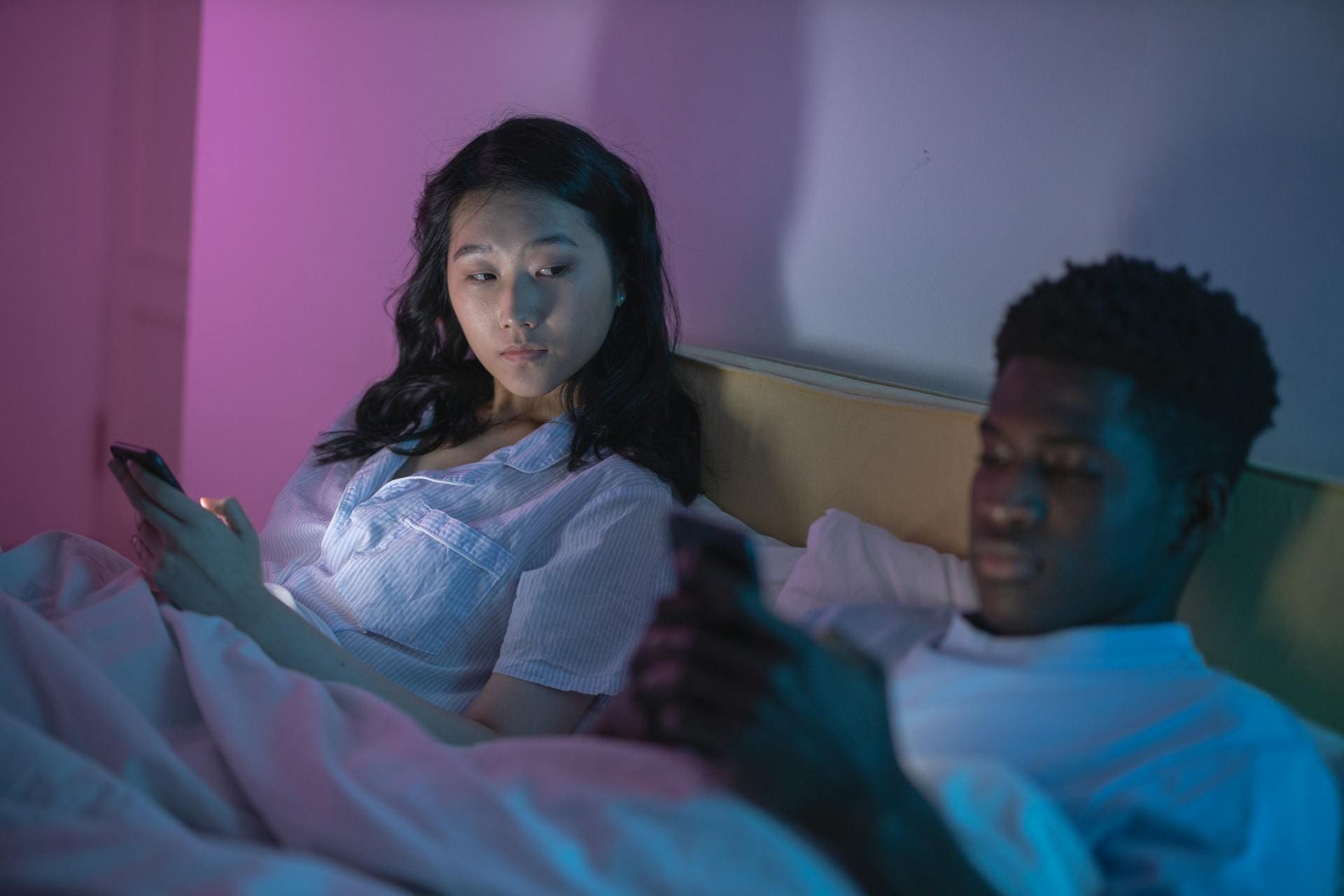Full Disclosure: Clicking on these links could mean a tiny commission for me, at no extra cost to you.
Does your child ever get that nervous feeling in their stomach before a big game or clam up during presentations? It’s normal. Anxiety is a common experience, affecting millions of kids in the United States alone. But when anxiety starts to interfere with their daily activities, schoolwork, or friendships, it can be tough on everyone. And as a parent, there’s nothing more heartbreaking than seeing your child struggle with anxiety. According to a study, around 7.1% of children aged 3-17 (about 4.4 million) have been diagnosed with anxiety disorders. 1 The good news is there are ways to help your child identify and manage their anxiety triggers. This guide will break down what triggers are, steps for dealing with anxiety triggers, how to spot them in your child and equip you with tools to help them deal with those moments.
What are anxiety triggers?
Dealing with child and teen anxiety can be a minefield for both parents and children. Anxiety triggers act like tripwires, setting off an emotional avalanche within your child’s mind. These triggers come in all shapes and sizes: a crowded classroom, an upcoming math test, or even a sleepover with friends. While these situations may seem harmless to us, your child’s brain perceives them as legitimate threats, igniting a cascade of anxious thoughts and physical responses.
Identifying and addressing these anxiety triggers is crucial for helping your child navigate their emotional landscape. But it’s not about eliminating the triggers entirely (although that would be nice). Instead, it’s about preparing your child with the tools and strategies to face these challenges head-on, defusing the “anxiety landmines” before they detonate.
advertisement
Reading to start healing?
Teen Counseling offers expert online therapy to help them navigate their challenges and thrive. Connect with a licensed therapist today and give your teen the support they need.
Don’t wait – help is just a click away! .
How to identify your child’s triggers?
The first step to dealing with anxiety triggers is pinpointing the specific situations, thoughts, or events that set off your child’s anxiety is the first step in learning to manage it effectively. So, how do you figure out what triggers your child’s anxiety? Here are a few tips:
Open Communication
Maintain an open and honest dialogue with your child. First, create a safe space where they feel comfortable sharing their thoughts and emotions without fear of judgment. Then, ask them directly what situations make them feel nervous, worried, or scared. And while they share openly with you, pay attention to their physical signs or body language too. Fidgeting, sweating, and rapid heartbeats can all be anxiety symptoms.
Keep a Journal
Encourage your child to keep a mental health journal or diary to track their emotions. When they experience anxiety, have them write down what happened, where they were, and who they were with. Over time, patterns might emerge, revealing common triggers. This written record can also help identify potential coping strategies that work for your child.
Play Detective
As a parent, you’ll need to put on your detective hat and observe your child’s behavior in different settings. Do they become withdrawn at parties or family gatherings? Do they seem on edge before school plays or sporting events? These could be potential triggers. As per the National Institute of Mental Health, nearly 9.1% of adolescents have social anxiety disorder, which can manifest when your child or teen is exposed to social situations. 2 By combining open communication, journaling, and careful observation, you can piece together the puzzle of your child’s anxiety triggers. This knowledge can empower you to develop targeted strategies and coping mechanisms that’ll help your child overcome their emotional landscape with higher confidence and resilience.
How to help your child manage their anxiety triggers?
Once you’ve identified your child’s anxiety triggers, it’s time to equip them with the tools and methods to manage them. Here are some strategies that may work:
Teach them relaxation techniques
When your child is in the grip of anxiety, relaxation techniques can be a powerful tool to help them regain their calm and reduce stress. Deep breathing techniques, for example, where they focus on taking slow, controlled breaths, can work wonders for soothing the body’s stress response. According to research, deep breathing techniques were found to significantly reduce anxiety levels in children aged 8-12. 3
Mindfulness practices like meditation or body scans can be incredibly grounding too. Encourage your child to notice the sensations in their body and the world around them, anchoring them in the present moment.
Some kids might find it helpful to visualize a peaceful scene, like a sunny beach or a quiet forest. Others might prefer counting backward from ten or repeating a simple mantra. The key is finding what resonates best with your child’s personality and needs in that moment.
Encourage positive self-talk
Negative thoughts can be fuel for your child’s anxiety fire, but positive self-talk can act as a powerful extinguisher. Studies show that children who practice positive self-talk experience lower levels of anxiety and stress and better overall well-being. 4 So, encourage your child to challenge those self-doubting inner voices that whisper things like, “I’m going to mess up this presentation” or “Everyone will think I’m stupid.” Gently guide them to reframe those thoughts with more constructive, positive affirmations. For example, “I’ve prepared a lot, and I’m going to do my best” or “It’s okay to feel nervous, but I can get through this.”
This may feel awkward at first but remind them that they’re reprogramming their mind to be their own biggest cheerleader, not their harshest critic.
Consider exposure therapy
Exposure therapy might sound like the last thing you’d want to try with an anxious child. However, this approach, when done gradually and in a safe, controlled environment, can actually help desensitize your child to their triggers. Research claims that exposure therapy is an effective treatment for up to 90% of people with generalized anxiety disorder. 5
The key is to start small and work your way up. If your child is terrified of public speaking, you won’t throw them on stage for a TED Talk right away. Instead, you might start by having them practice giving a short presentation to you, their trusted parent. Once they gain confidence, you could invite a small group of friends or family members to listen. Slowly but surely, you’d increase the audience size and difficulty level until your child has conquered their fear.
The beauty of this approach is that it allows your child to face their anxiety head-on in a safe, controlled space. With each successful exposure, they’ll realize that their feared outcome rarely materializes, and their anxiety will gradually diminish.
Validate their feelings
The worst thing you can do when your child is currently having intense anxiety attacks is to dismiss or invalidate their feelings. Telling them their worries are “silly” or “unimportant” will only make them feel more misunderstood and alone. Instead, approach the situation with empathy and validation.
So, when your child expresses anxiety, acknowledge their feelings without judgment. Let them know it’s okay to feel anxious or scared. These are normal human emotions that we all experience.
You could say something like, “I understand why you’re feeling worried about the science fair. It’s a big deal, and it’s normal to feel nervous before an event like that.” This simple act of validation can go a long way in making your child feel heard, understood, and supported. It also creates a safe space for them to express their emotions without fear of being shut down or criticized.
Seek professional help
While you can make a huge difference in supporting your child through anxiety by helping them with dealing with anxiety triggers, sometimes seeking professional help is necessary, too. If your child’s anxiety is severe or causing major disruptions in their daily life (e.g., refusing to go to school, having panic attacks, or experiencing physical symptoms like headaches or stomachaches), it’s time to enlist some expert backup. A therapist, mental health professional, or counselor trained in childhood anxiety can provide valuable guidance and develop a personalized treatment plan tailored to your child’s needs.
advertisement
Access Anxiety Treatment Right Now
→ Online Therapy – Speak with a licensed therapist today. Teen Counseling offers online therapy starting at $65 per week. Free Assessment
→ Digital Psychiatry – Try FDA-Approved Medication Prescribed by your Dedicated Brightside Team and Delivered to your Door for $45 your First Month. Get Started
Takeaway
Helping your child navigate anxiety triggers can be a challenging but rewarding journey. By following the strategies outlined here, you can empower your child to start dealing with anxiety triggers, manage their anxiety and thrive. There will be setbacks, but with patience, support, and the right tools, your child can strengthen their resilience, learn to overcome their anxiety and live a happy, fulfilling life.
Additional Resources
Ready to elevate your mental wellness? To help our readers thrive along their mental health journey, Anxiety Gone partners with leading experts in mental health and wellness field. Anxiety Gone may receive commission from the companies listed below at no extra cost to you.
Online Therapy
Teen Counseling offers access to over 20,000 licensed therapists available, starting at just $65 per week. Take a free online assessment today to get matched with the right therapist for you. Get Started
Virtual Psychiatry
Brightside Therapy offers anxiety and depression treatment online from licensed psychiatric providers and therapists. No need to wait, start a free consultation online today. Get Started
Mental Health Newsletter
Join our free Anxiety Gone newsletter and receive helpful tips and expert advice delivered right to your inbox. Sign Up
Mindfulness Plus+
Unlock over 2,000 mindfulness practices created by experts within the mindfulness and meditation field, with daily practices designed to meet your unique needs and aspirations, this serves as your daily companion toward a more mindful existence. Get Started
Digital Breathwork Classes
Reduce stress and anxiety from home with guided breathing exercises, created by leading experts and breath work gurus. Start Your Free Trial
Mental Health Support
Access our list of mental health support lines and crisis hotlines and receive immediate access to professionals trained to help. Find a Helpline
- Cross-continental environmental and genome-wide association study on children and adolescent anxiety and depression”, Source: https://www.ncbi.nlm.nih.gov/pmc/articles/PMC11141390/
- Social Anxiety Disorder”, Source: https://www.nimh.nih.gov/health/statistics/social-anxiety-disorder
- Effects of Using Guided Deep Breathing Exercises in a Virtual Natural Environment to Reduce Stress during Pediatric Treatment”, Source: https://www.ncbi.nlm.nih.gov/pmc/articles/PMC10743274/
- Self-Talk”, Source: https://www.healthdirect.gov.au/self-talk
- Exposure Therapy”, Source: https://my.clevelandclinic.org/health/treatments/25067-exposure-therapy










